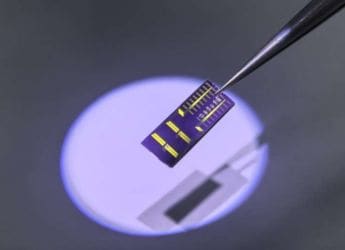- Home
- Mobiles
- Mobiles News
- 3D Printed Head Unlocks Top Android Phones, iPhone X ‘Impossible’ to Beat: Report
3D-Printed Head Unlocks Top Android Phones, iPhone X ‘Impossible’ to Beat: Report

Apple iPhone X was the only smartphone that survived the test
Most modern smartphones now ship with facial unlocking features these days. The promise of a quicker way to unlock your smartphone by just looking at it seems quite interesting. It offers an alternative to the good old trustworthy passcode, but is it really secure? No doubt this has been a major topic of debate ever since facial recognition technology started appearing on smartphones. A Forbes reporter decided to test it out with a 3D-printed model of his own head. What happened next may (or may not) surprise you.
Thomas Brewster, a reporter at Forbes, managed to get a 3D-printed model of his head at Backface in Birmingham, UK for around GBP 300 (roughly Rs. 21,100). The 3D model is created after capturing detailed photographs via 50 different cameras and editing the images. The result is a life-size 3D model that resembles an actual person and in this case the reporter himself.
The test was conducted on five different smartphones - iPhone X, LG G7 ThinQ, Samsung Galaxy S9, Samsung Galaxy Note 8, and OnePlus 6. After setting up the facial unlocking feature using his real face, Brewster was able to unlock all the four Android smartphones using the 3D printed model of his own head. He admits all the Android phones were unlocked with 'differing degrees of ease'.
But he couldn't unlock the iPhone X. He claims the iPhone X was impossible to beat with the 3D-printed model. At the launch of the iPhone X, Apple had claimed that it worked with Hollywood studios to test out its Face ID technology with 3D printed facial masks and other objects to see if it can be spoofed. But back in 2017, security researchers in 2017 had claimed to have found a way to bypass Apple's Face ID technology using an affordable face mask.
Even though the Android devices failed badly, Brewster says most manufacturers were found to be serving notices during facial unlock activation that the feature isn't completely secure, and is more of a convenience. Some Android manufacturers also advise customers to keep a passcode on as a secondary method of unlocking their phone, adding to the security.
However, the Forbes test also found no such warning on the OnePlus 6. The publication also claims it was the 'least secure' of all the devices they tested.
Even as mobile phone companies look towards making lives easier for their customers, at the end of the day it is up to the users themselves on what they pick. If you want to keep your phone secure, the passcode is still a great way to go about it. A combination of a fingerprint reader and a passcode work well as well. As for facial unlock, it's still more of a convenience for most mobile phone users rather than a 100 percent secure solution.
Get your daily dose of tech news, reviews, and insights, in under 80 characters on Gadgets 360 Turbo. Connect with fellow tech lovers on our Forum. Follow us on X, Facebook, WhatsApp, Threads and Google News for instant updates. Catch all the action on our YouTube channel.
Related Stories
- Samsung Galaxy Unpacked 2025
- ChatGPT
- Redmi Note 14 Pro+
- iPhone 16
- Apple Vision Pro
- Oneplus 12
- OnePlus Nord CE 3 Lite 5G
- iPhone 13
- Xiaomi 14 Pro
- Oppo Find N3
- Tecno Spark Go (2023)
- Realme V30
- Best Phones Under 25000
- Samsung Galaxy S24 Series
- Cryptocurrency
- iQoo 12
- Samsung Galaxy S24 Ultra
- Giottus
- Samsung Galaxy Z Flip 5
- Apple 'Scary Fast'
- Housefull 5
- GoPro Hero 12 Black Review
- Invincible Season 2
- JioGlass
- HD Ready TV
- Laptop Under 50000
- Smartwatch Under 10000
- Latest Mobile Phones
- Compare Phones
- OnePlus 15R
- Realme Narzo 90x 5G
- Realme Narzo 90 5G
- Vivo S50 Pro Mini
- Vivo S50
- OPPO Reno 15c
- Redmi Note 15 5G
- Redmi Note 15 Pro 5G
- Asus ProArt P16
- MacBook Pro 14-inch (M5, 2025)
- Infinix Xpad Edge
- OnePlus Pad Go 2
- OnePlus Watch Lite
- Just Corseca Skywatch Pro
- Acerpure Nitro Z Series 100-inch QLED TV
- Samsung 43 Inch LED Ultra HD (4K) Smart TV (UA43UE81AFULXL)
- Asus ROG Ally
- Nintendo Switch Lite
- Haier 1.6 Ton 5 Star Inverter Split AC (HSU19G-MZAID5BN-INV)
- Haier 1.6 Ton 5 Star Inverter Split AC (HSU19G-MZAIM5BN-INV)






















